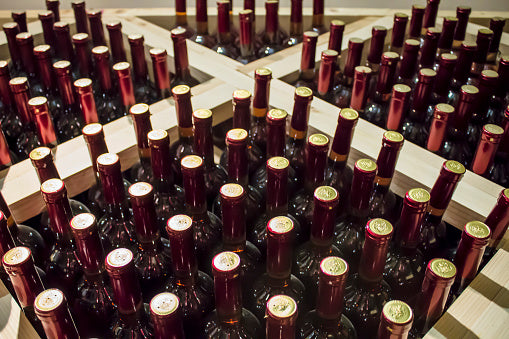Everyone is obsessed with French wine and praises them. That's right, we don't take any credits out of them, but how about those pasta wines? They are as good as Italian food we all adore. So, if you're all pizza, pasta, and bruschetta person (and not only), check this article out!
The world of Italian wine can be intimidating—in a country the size of California, there are over 2,000 native grape types, with only approximately 400 being used in commercial winemaking, according to some estimates. Every Italian province produces and exports wine, so there are a lot of different regions to keep track of! Also, as with any other thing nowadays, you can find Italian wines online and with the best prices, most of them you can find at affordable prices- top wines under $50.
As an added benefit, Italian wines are known for being food-friendly across the board, so you'll be able to discover the right match for anything from pasta night to a seafood extravaganza to an antipasti picnic. The top Italian wines to seek out right now are listed below.
- Barbera
Barbera has long been used to fill in the valleys and low slopes of Northern Italy. Because it is regarded as a lesser wine than Nebbiolo, it does not receive the best grape-growing land (such as south-facing slopes on hills above the 'nebbia' or fog).
Despite its humble status, Barbera is the ultimate 'people's wine,' meant to be consumed young and at a modest cost!
Barbera wine manages to be both full-bodied and light-bodied at the same time. What is the reason for this? One reason is that it contains dark staining pigments, which turn the wine nearly black.
Barbera, on the other hand, offers strawberry and tart cherry notes, which are typical of light-bodied wines. It has a 'Juicy' flavor because of the light tannin and high acidity.
The majority of Barbera you'll encounter comes from Italy, and it has stronger herbaceous flavors, as you can see in the table below.
- Brunello di Montalcino
Brunello di Montalcino is where sangiovese truly shines. This Tuscany winery produces some of the most nuanced and long-lived wines in Italy, including this ethereal 2015 vintage from a renowned third-generation winemaker. With flavors of tart red berries, mushroom, black tea, and anise, this flowery, savory, and herbaceous wine has a lot going on, and it's just going to get better with age. Serve with roasted rosemary lamb, wild boar ragù, or truffle risotto for a rich meal.
- Super Tuscan
Tuscany isn't the only place where Super Tuscans are manufactured! IGT, or Indicazione Geografica Tipica, refers to any wine produced in Italy utilizing "unofficial grapes." Aside from Tuscany, Lazio has some wonderful wines (and values). This particular blend contained 65 percent Sangiovese, 30 percent Merlot, and 5% Petit Verdot. For around top wines under $50, this is a great find!
- Pinot Grigio
Pinot Grigio is a light, crisp, and dry white wine with plenty of zippy, mouth-watering acidity. It's called pinot grigio in Italy, pinot gris in France, Grauer burgundy in Germany, and grauburgunder in Austria depending on the country. Pinot grigio is America's second most popular white wine, and while it isn't necessarily a connoisseur's first choice, it is a popular choice among wine drinkers everywhere. It has a low alcohol content, similar to other white wines.
- Sangiovese
Sangiovese is fairly scarce outside of Italy, which may surprise you. Sangiovese is less common than even the lesser-known Mourvedre in terms of global plantings.
The Sangiovese grape is a chameleon, easily adapting its DNA to fit its surroundings. There are several different mutations of the varietal throughout Italy, resulting in wines with extremely varied flavors. Sangiovese wine provides something for everyone, from the delicate flowery strawberry scents of Montefalco Rosso to the profoundly black and tannic wines of Brunello di Montalcino.
Sangiovese has a savory flavor. Sangiovese wines can have a wide range of flavors, from earthy and rustic (as in many Chianti Classico) to round and fruit-forward (as in many Chianti Classico). It always has cherry flavors with more faint tomato overtones, regardless of where it's cultivated.
Because there are so many Italian wines to choose from, we cannot go over all of them in one article, but we have tried to create this mini-guide to help you find the perfect match for your palette. Please, enjoy!




